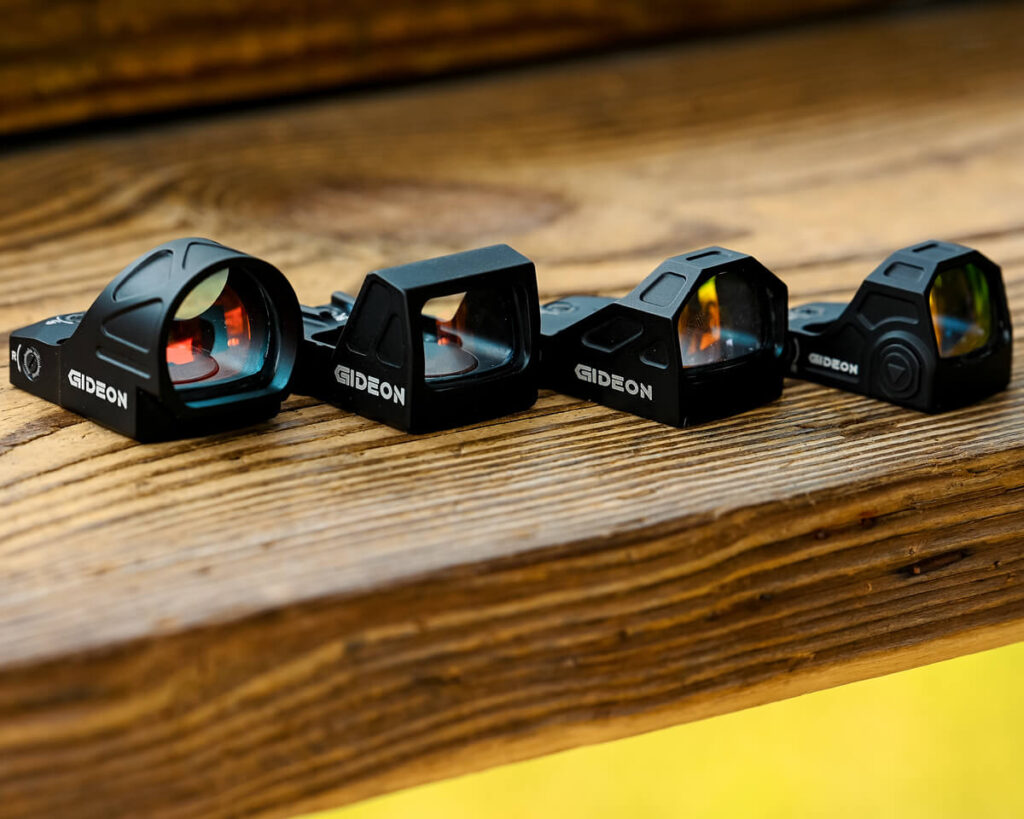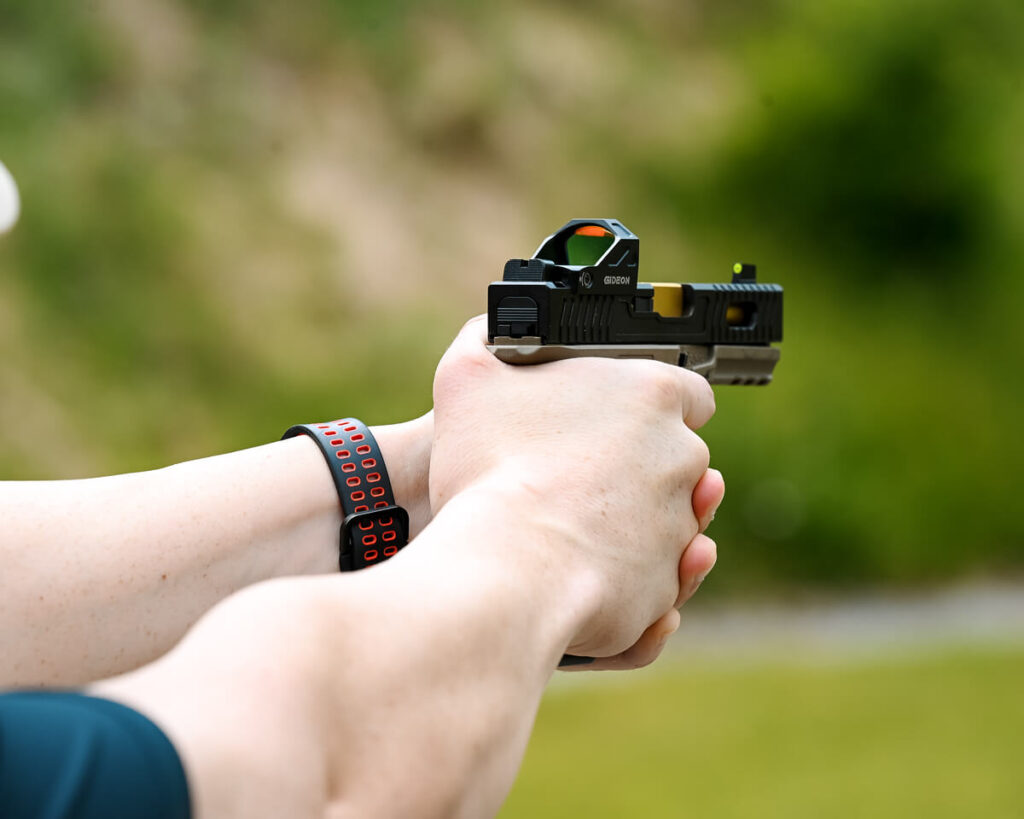If you’ve considered performance optics for your weapon, you need to understand the difference between Mil-Dot vs. MOA measurements and how it relates to the accuracy of a scope or sight. While plenty of shooters will use both almost interchangeably, and there are similarities to the two measurements, precision optics rely on the difference to give you the right measurements and adjustments to dial in on the target. Learning the difference between the two can help you choose the right type of optics for your firearms and get the most out of them so you can put out tighter groups at the range or in the field.
Calculating Angles of Deviation
When considering Mil-Dot vs. MOA, it’s important to understand that both relate to the angles inside a circle. When you aim your weapon and fire, the bullet flies to an impact point which may or may not be the point you were aiming at. If you consider the traditional bulls-eye style target made up of concentric rings, it helps you understand that any deviation of a shot from the aiming point can be described by the way it radiates out from dead center on those circles. That means its location can be described by the angles left and right or up and down as compared to the point of aim. If you’re confused already, don’t worry. We’ll get into practical application shortly, but right now, the main takeaway about these two points of optics terminology is whether you choose Mil-Dot vs. MOA, you’re just talking about angles of deviation.
Mil-Dot
Rather than being a shortened form of military, as is often assumed, the mils that lend their name to Mil-Dot type sights stand for milliradians. These milliradians measure part of the 360 degrees of angle that goes into a circle. When you look at Mil-Dot vs. MOA reticles, there are often hash marks to the left and right of the vertical center and above and below the horizontal center of the reticle. Each of these marks represents a single mil of deviation, and at 100 yards, a common range for sighting in long guns, that mil equals about 3.67 inches. While every scope is different, most Mil-Dot systems offer windage and elevation adjustments of 1/10 of a mil per click on the x and y-axis of your reticle, respectively, but be sure to check your scope specifications to avoid overcorrection.
MOA

While Mil-Dot vs. MOA adjustments are remarkably similar, the extent of each is where the difference comes in. MOA stands for “Minute of Angle,” where each degree of angle is divided into 60 minutes, just as an hour on a clock would be. This finer increment gives you about a 1-inch deviation per hash mark on your reticle at 100 yards, making it serviceable at long ranges and a better choice for sights used on weapons that will often be used at far closer ranges, like handguns. Many MOA sights feature a 1-MOA-per-click adjustment to windage and elevation, making the math easier for a shooter.
Best of all, for ranges less than 100 yards, the math for figuring out your MOA adjustments is simpler. This simple and versatile formula lets you easily sight in MOA-based precision optics at almost any range. By reducing the range to the decimal equivalent in 100-yard increments, it’s easily plugged into a smartphone, calculator, or worked out in pencil on the back of an old target.
Deviation From Aim Point in Inches/Range to Target in Hundreds of Yards = MOA from Center
That means a shot that’s two inches high at 50 yards will need an elevation adjustment of 4 MOA to drop onto the target.
2 Inches / 0.5 Hundreds of Yards = 4 MOA
Converting MOA to Mil-Dot
We all like easy math, and that wasn’t too intimidating, although if you’re sighting a MIL-Dot vs. MOA scope, it would seem to have limited application. The truth is that this easy formula pairs with an equally simple formula that converts MOA deviation into mils. Consider that at 100 yards, a single mil is 3.67 inches while an MOA is a single inch. You simply take your MOA adjustment results from the previous calculations and multiply them by 0.3 to get your approximate mil deviation. As an example:
MOA X 0.3 = Mil Deviation
Using our previous example:
4 MOA X 0.3 = 1.2 Mil
On a scope that has 0.1 mil-per-click adjustments, 12 clicks will get you to an accuracy where all that’s required is fine-tuning.
Choosing the Right Precision Optics for Your Firearms
When you’re finding the right optics for your gun, you’ll consider a lot more than MOA vs. Mil-Dot. There are special features, magnification ratios, illumination, and more. When it comes down to choosing the adjustment measurements that are right for you, however, it gets a bit easier. While the true responsibility always comes down to the skills of the shooter, all other things being equal, the right tools do better when used for the right job.

MOA sights are best for short to moderate-range firearms. Handguns, pistol-caliber carbines, shotguns, and rifles meant for short-range tactical shooting will do best with the easy math and easy adjustments minutes of accuracy allow. The greater deviation allowed by a 1 MOA adjustment has less of an impact on the size of your shot groups at short ranges, especially those commonly found in defensive tactical situations.
The larger increments of measurement in Mil-Dot vs. MOA sights wither in the face of the smaller incremental adjustments. As ranges extend out, 0.1 mils-per-click translates to a much smaller grouping downrange. This is perfect for hunting, sniping, long-range precision, and optics on versatile long guns that may be called on to engage at multiple ranges.
Optics Built For Real-World Accuracy
We’re proud to give you better optics that offer reliable accuracy, industry-leading features, and a price that doesn’t break the bank. Our tactical reflex sights use easy-to-dial-in one-MOA-per-click windage and elevation adjustments that deliver real-world accuracy for your handguns, carbines, or as a reaction sight for your tactical rifles. Get the precision optics you need from Gideon Optics today.
